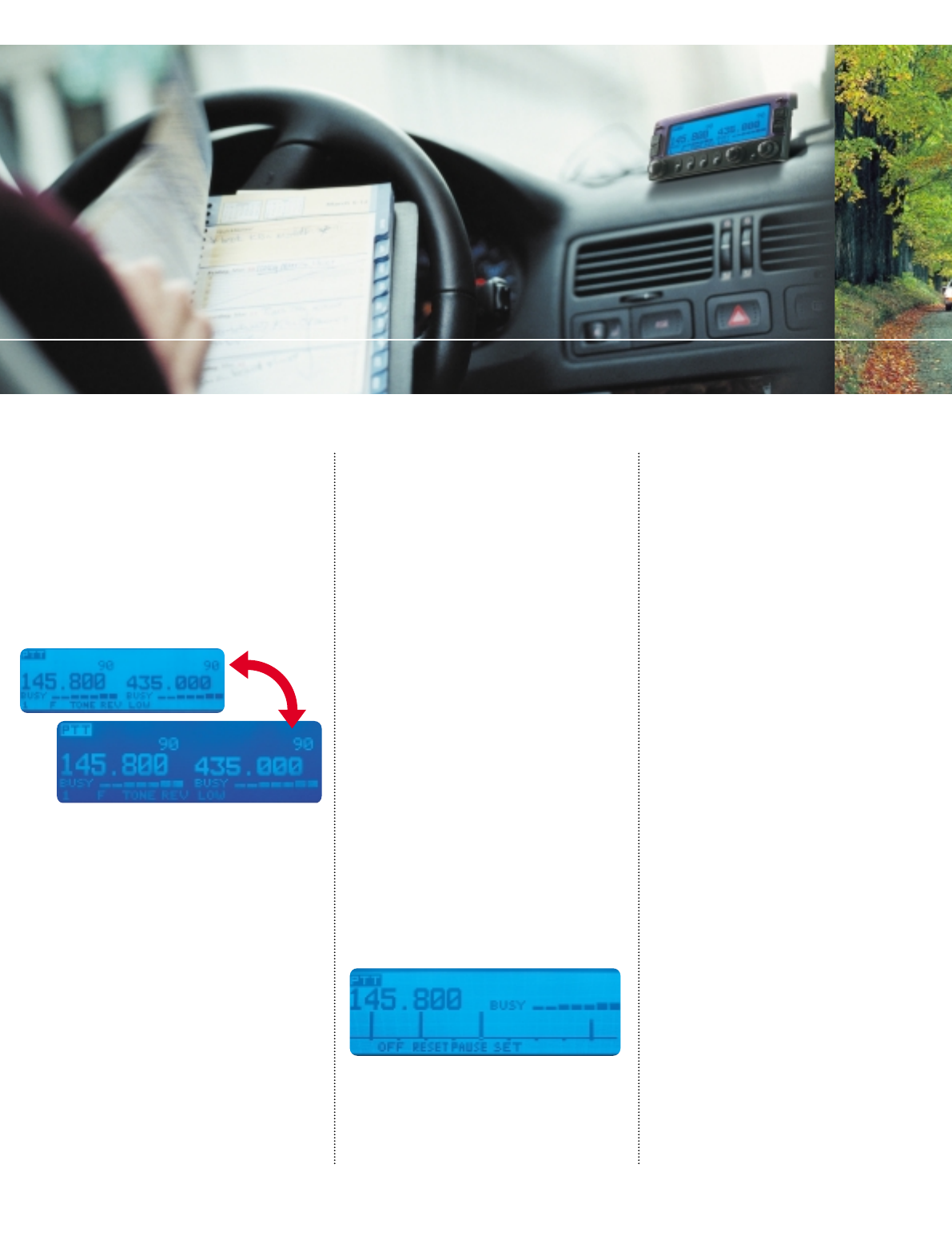
Dual-mode reversible LCD
The blue LCD panel, which displays dot-
matrix characters — can be switched
between positive and negative display
modes to ensure optimum visibility in all
conditions. Also, the large control panel
(51.5 x 105 mm) features four multifunc-
tion keys — with key function display —
for improved operating ease.
Mobile Contact: Crystal-Clear Commun
convenient for searching out open
channels.
DTSS selective calling with page
function
Built-in DTSS (Dual-Tone Squelch
System) allows DTMF access: the
squelch is opened only when a specific
3-digit code has been received. The
page function alerts you to incoming
calls and opens the squelch if the receiv-
er has been programmed to accept a
DTMF tone group. And even during
normal reception (squelch open), the
TM-V7E can be on the alert for a pre-
determined code.
Built-in CTCSS encoder/decoder
The CTCSS (Continuous Tone Coded
Squelch System) encoder/decoder en-
ables operation of the 38 EIA-standard
CTCSS subtone frequencies.
Auto simplex checker
ASC will automatically check whether it
is possible to switch from a repeater to
simplex communications.
Advanced Intercept Point
You can choose either high sensitivity for
simplex/weak-signal work, or a high
intercept point — using Kenwood’s own
AIP circuitry — to minimize intermod or
adjacent channel interference.
“Five-in-one” programmable
memory
The TM-V7E(BL) has a multiple “person-
ality” to suit different conditions. Its pro-
grammable memory can store five entire
operating profiles, ready for instant recall
at the push of a button. Each profile
includes such settings as positive/nega-
tive display mode, dimmer level, frequen-
cy range, and memory mode.
Dual receive on same band (f
2
)
In addition to simultaneous receive on
VHF and UHF bands, the TM-V7E(BL)
can receive two frequencies on the same
band. Monoband use is also possible.
Up to 280 multi-function memory
channels
There’s capacity as well as versatility: up
to 280 memory channels for storing
important data — transmit and receive
frequencies (independently), frequency
step, tone frequency, etc. (180 channels
when using Memory Name function)
Memory Name function
For greater convenience, you can
choose to identify each channel with up
to 7 alphanumeric characters. In this
mode, the number of memory channels
available is 180.
Multi-scan functions
Full band and program band scans,
memory scan with memory channel lock-
out, MHz scan and call scan are all avail-
able. For each band there are TO (time-
operated) and CO (carrier-operated)
scan stop modes.
Visual scan with pause
By automatically checking above and
below the frequency currently in use,
and graphing the results on the LCD
(147 channels max.), this new feature is
Visual scan display
tmv7_e_type.qxd 02.4.3 2:27 PM Page 3






